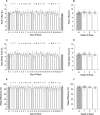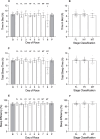The Night-Time Sleep and Autonomic Activity of Male and Female Professional Road Cyclists Competing in the Tour de France and Tour de France Femmes
- PMID: 38625486
- PMCID: PMC11021391
- DOI: 10.1186/s40798-024-00716-6
The Night-Time Sleep and Autonomic Activity of Male and Female Professional Road Cyclists Competing in the Tour de France and Tour de France Femmes
Abstract
Background: Sleep is a critical component of recovery, but it can be disrupted following prolonged endurance exercise. The objective of this study was to examine the capacity of male and female professional cyclists to recover between daily race stages while competing in the 2022 Tour de France and the 2022 Tour de France Femmes, respectively. The 17 participating cyclists (8 males from a single team and 9 females from two teams) wore a fitness tracker (WHOOP 4.0) to capture recovery metrics related to night-time sleep and autonomic activity for the entirety of the events and for 7 days of baseline before the events. The primary analyses tested for a main effect of 'stage classification'-i.e., rest, flat, hilly, mountain or time trial for males and flat, hilly or mountain for females-on the various recovery metrics.
Results: During baseline, total sleep time was 7.2 ± 0.3 h for male cyclists (mean ± 95% confidence interval) and 7.7 ± 0.3 h for female cyclists, sleep efficiency was 87.0 ± 4.4% for males and 88.8 ± 2.6% for females, resting HR was 41.8 ± 4.5 beats·min-1 for males and 45.8 ± 4.9 beats·min-1 for females, and heart rate variability during sleep was 108.5 ± 17.0 ms for males and 119.8 ± 26.4 ms for females. During their respective events, total sleep time was 7.2 ± 0.1 h for males and 7.5 ± 0.3 h for females, sleep efficiency was 86.4 ± 1.2% for males and 89.6 ± 1.2% for females, resting HR was 44.5 ± 1.2 beats·min-1 for males and 50.2 ± 2.0 beats·min-1 for females, and heart rate variability during sleep was 99.1 ± 4.2 ms for males and 114.3 ± 11.2 ms for females. For male cyclists, there was a main effect of 'stage classification' on recovery, such that heart rate variability during sleep was lowest after mountain stages. For female cyclists, there was a main effect of 'stage classification' on recovery, such that the percentage of light sleep (i.e., lower-quality sleep) was highest after mountain stages.
Conclusions: Some aspects of recovery were compromised after the most demanding days of racing, i.e., mountain stages. Overall however, the cyclists obtained a reasonable amount of good-quality sleep while competing in these physiologically demanding endurance events. This study demonstrates that it is now feasible to assess recovery in professional athletes during multiple-day endurance events using validated fitness trackers.
Keywords: Athletes; Competition; Exercise; Heart rate variability; Recovery; Sleep duration; Wearables.
© 2024. The Author(s).
Conflict of interest statement
CS, DJM and GDR are members of a research group at CQUniversity that receives support for research (i.e., funding, equipment) from Whoop, Inc.; ERC is a shareholder and employee of Whoop, Inc; SJ and JP are employees of Whoop, Inc.
Figures











References
LinkOut - more resources
Full Text Sources
Miscellaneous

